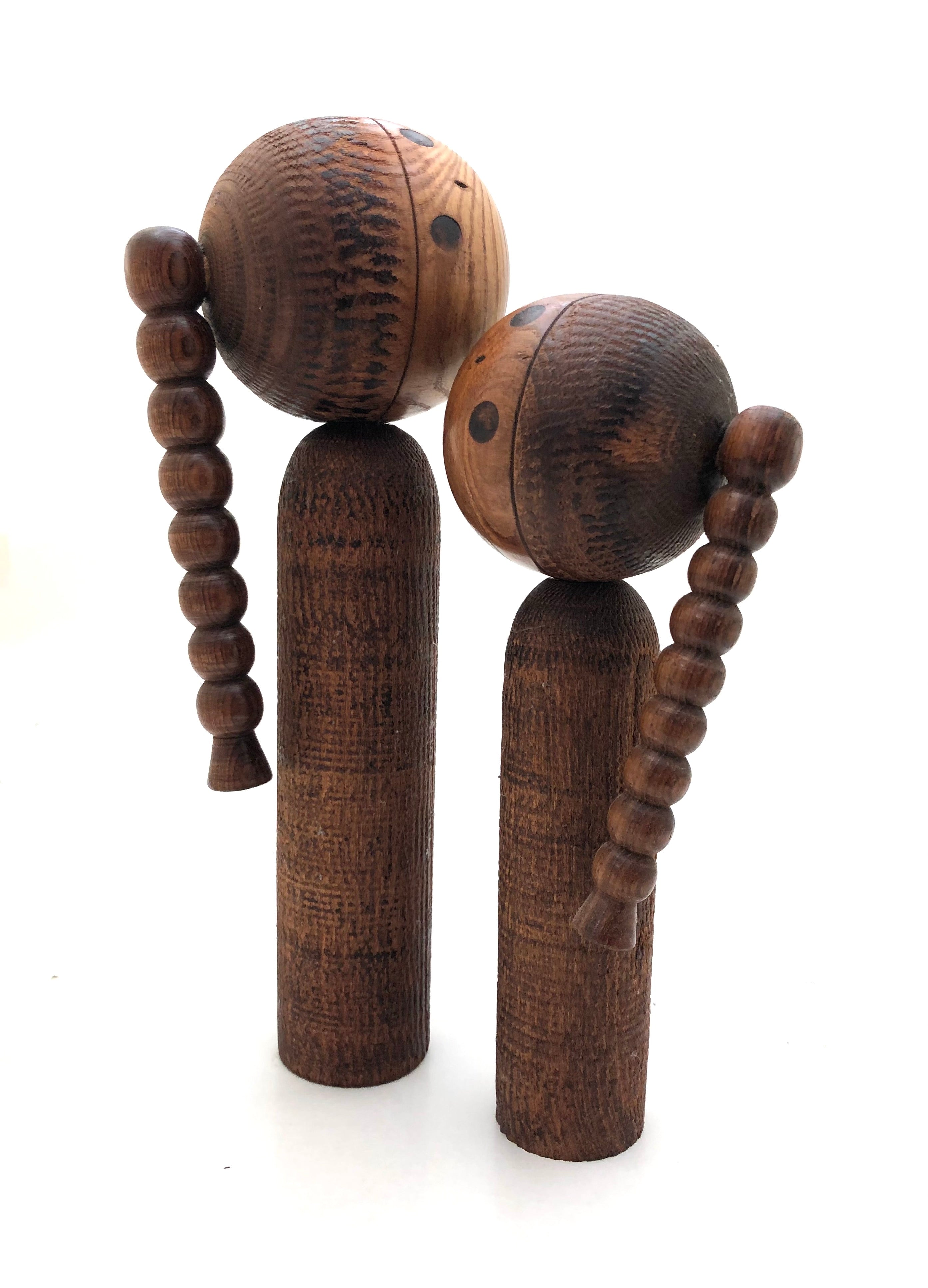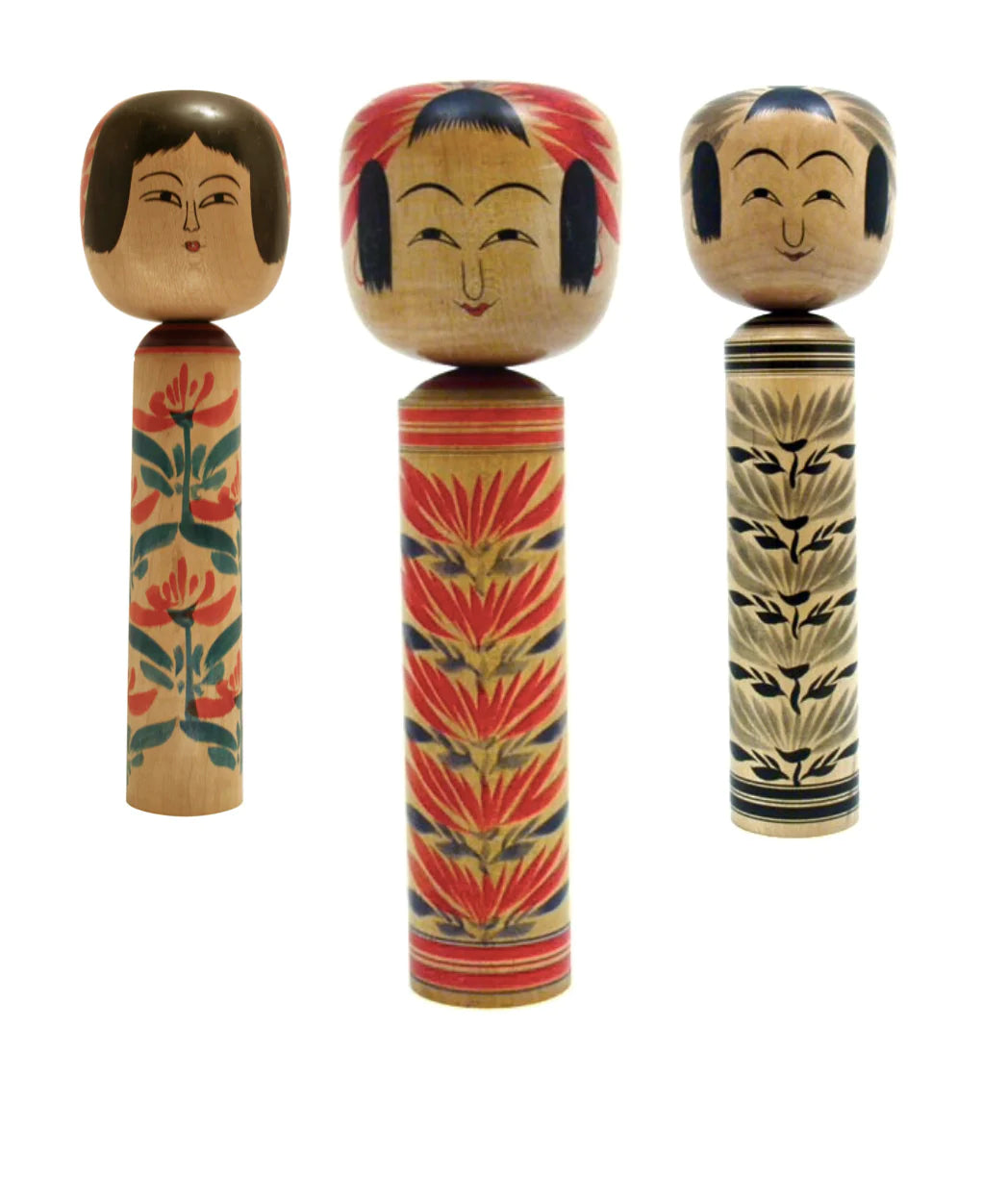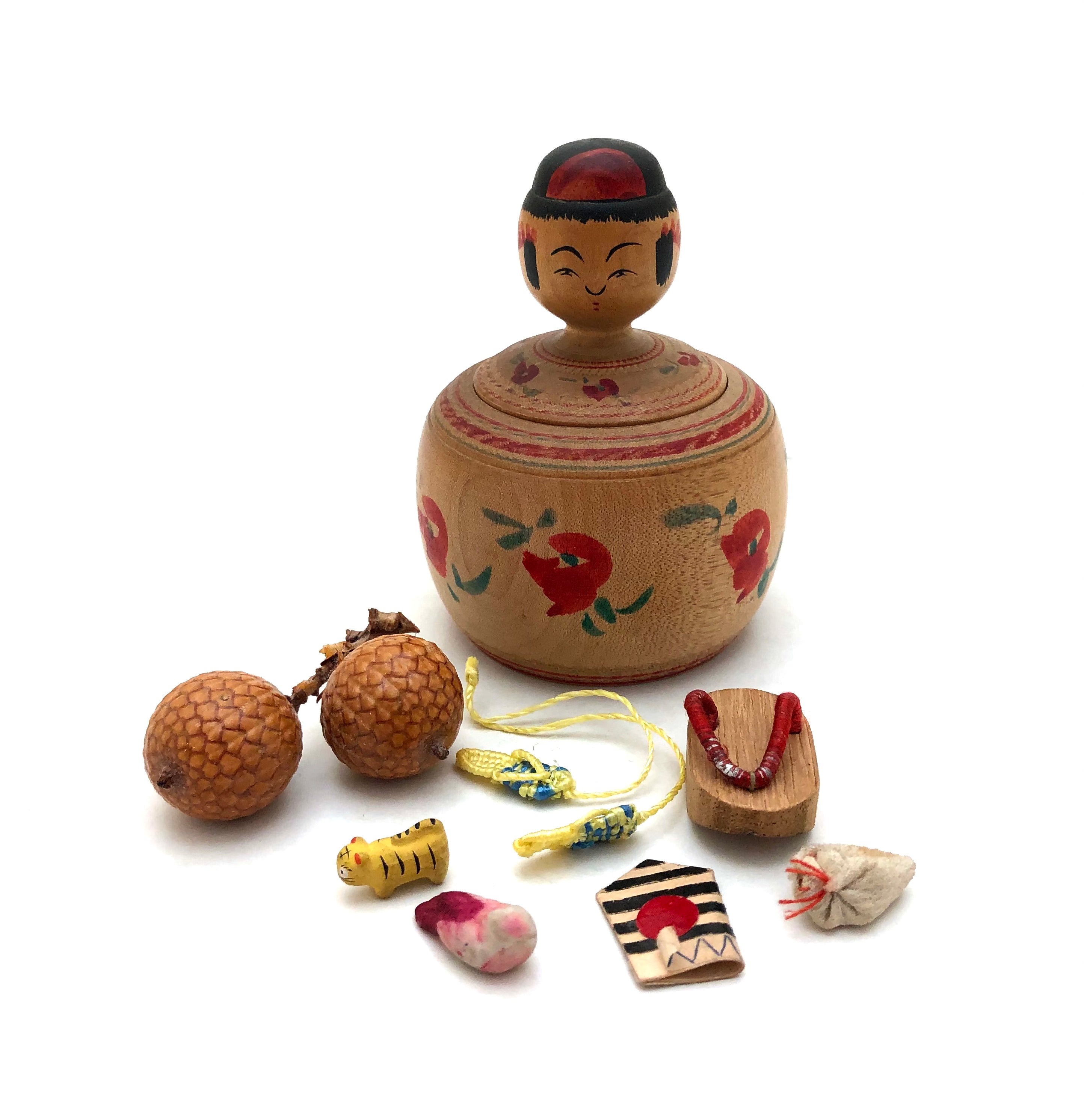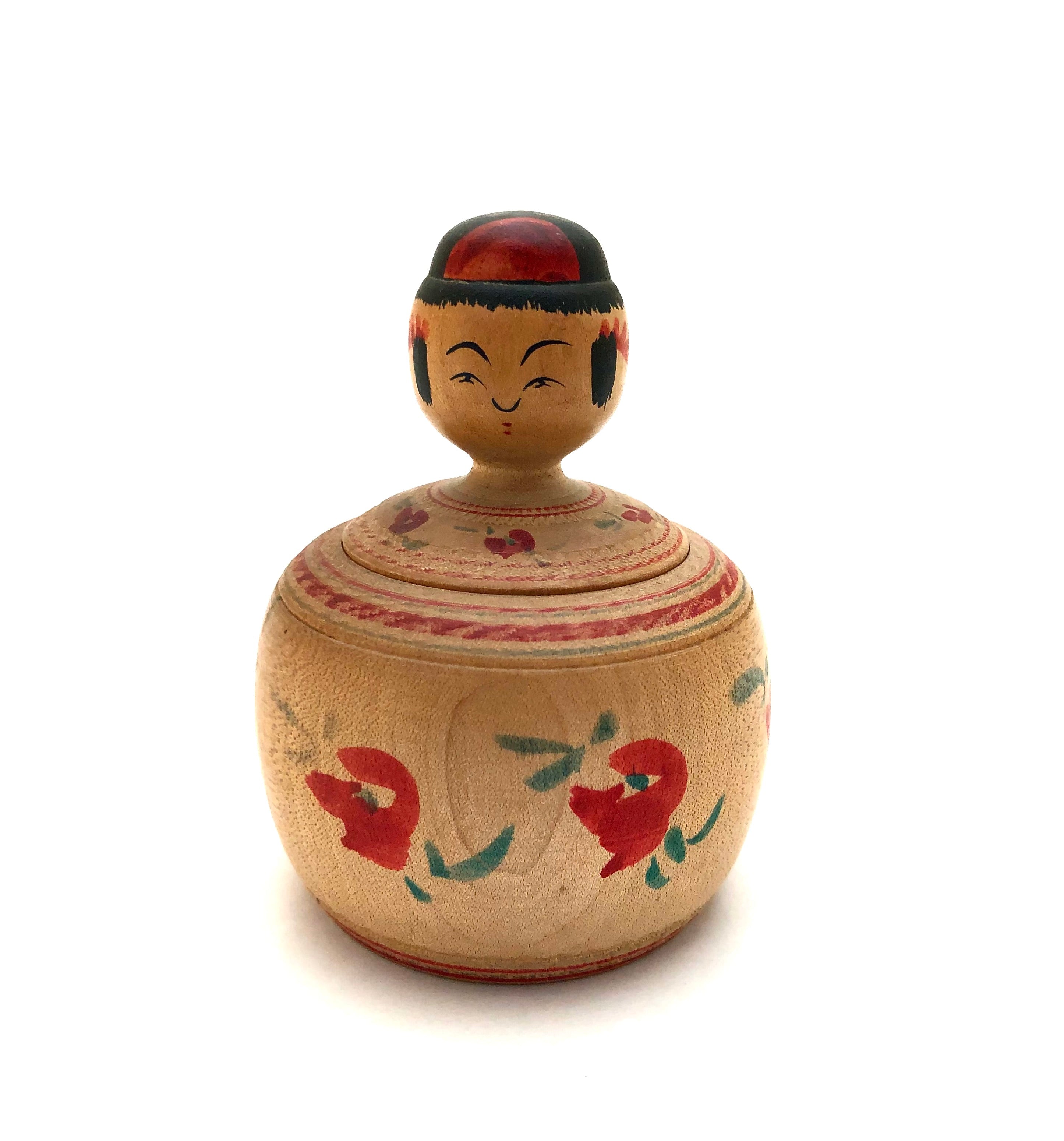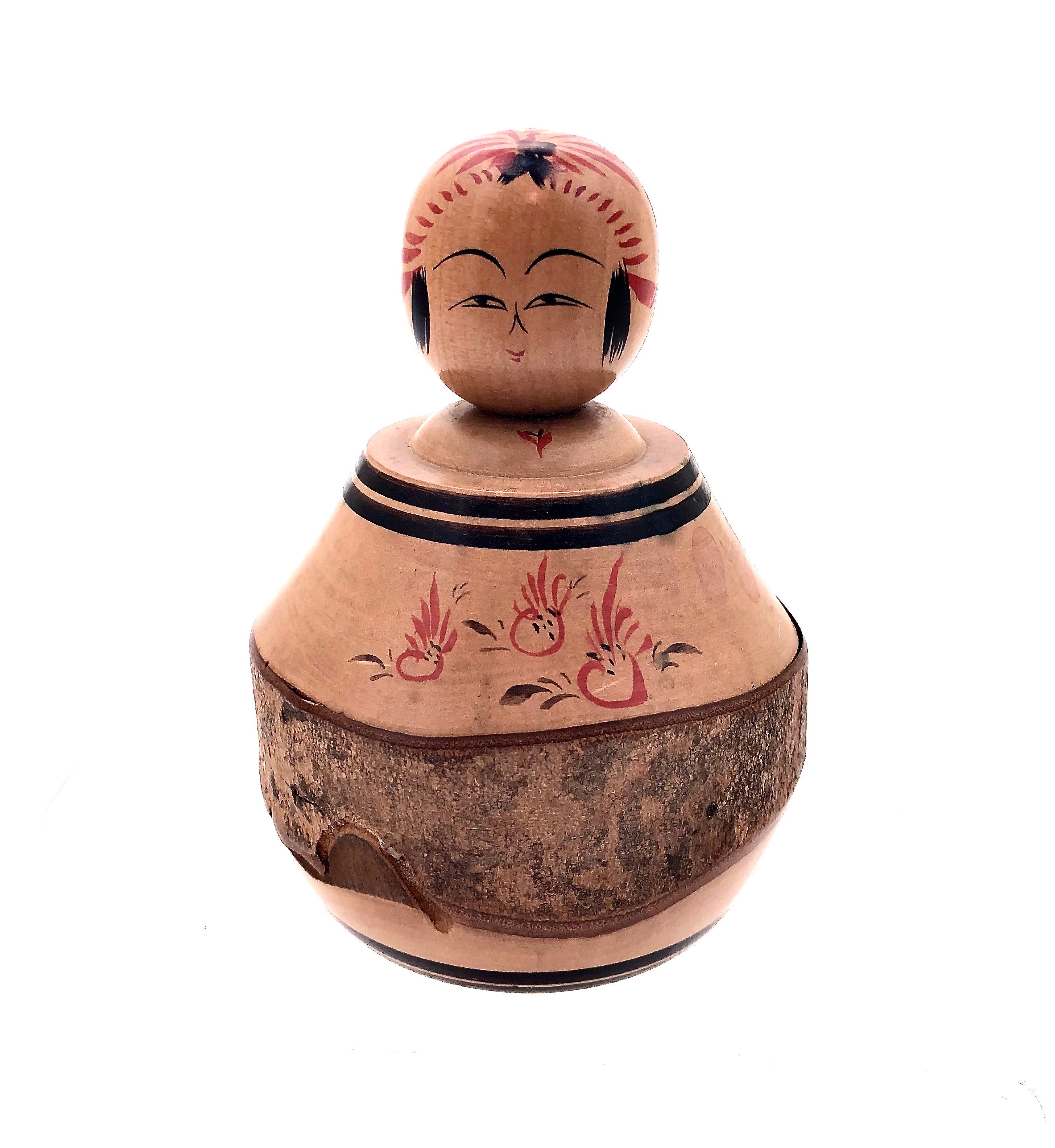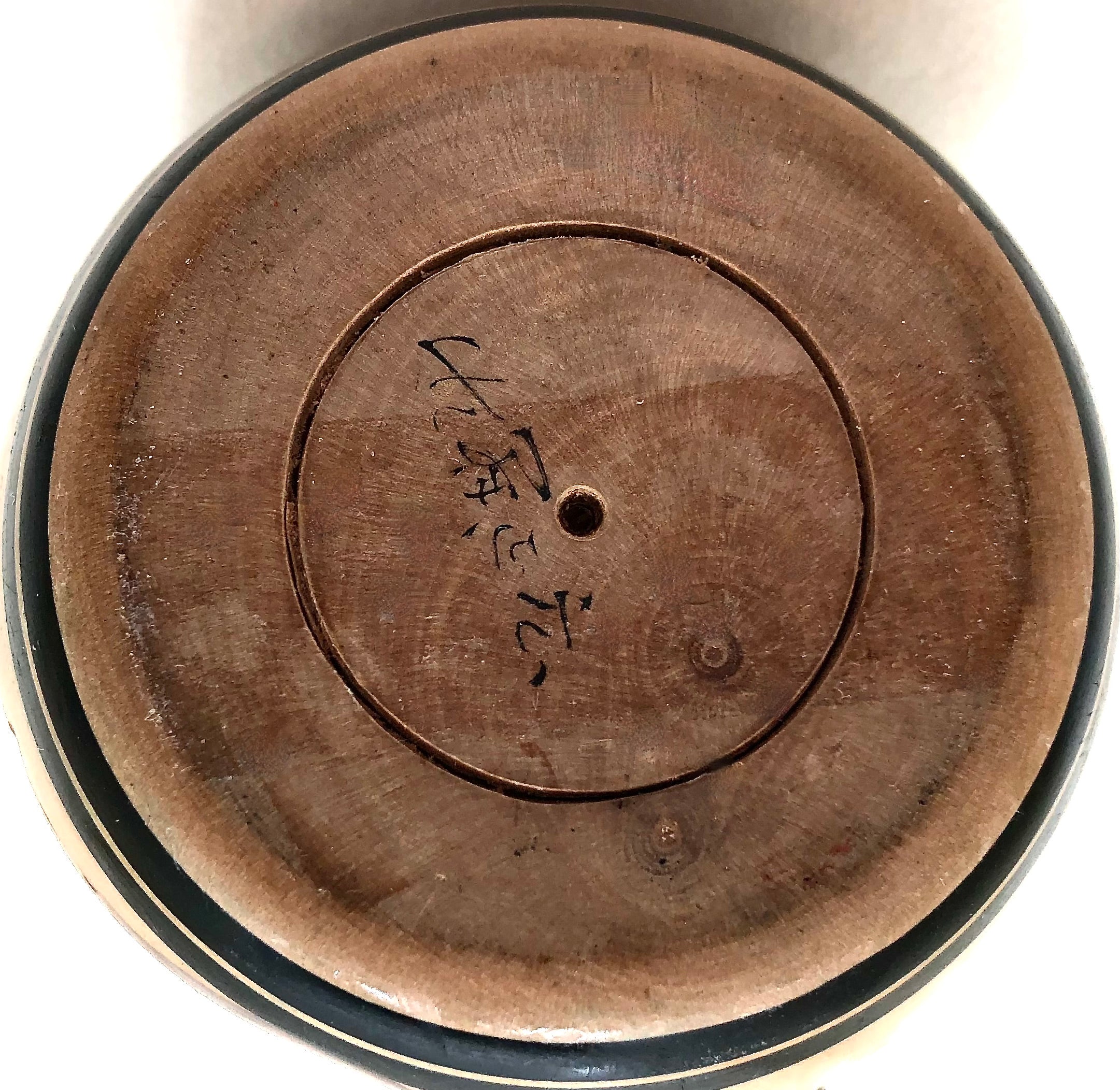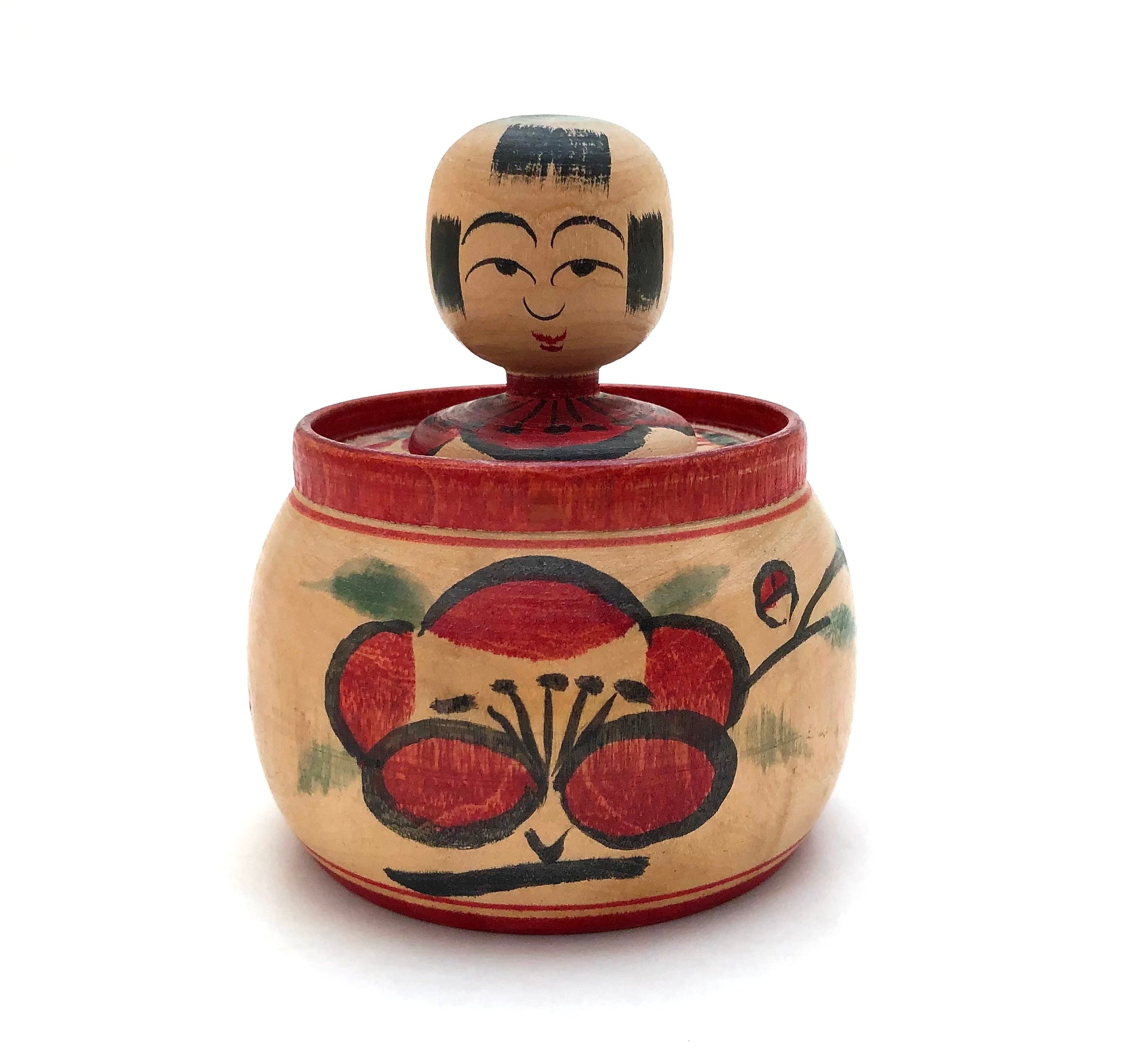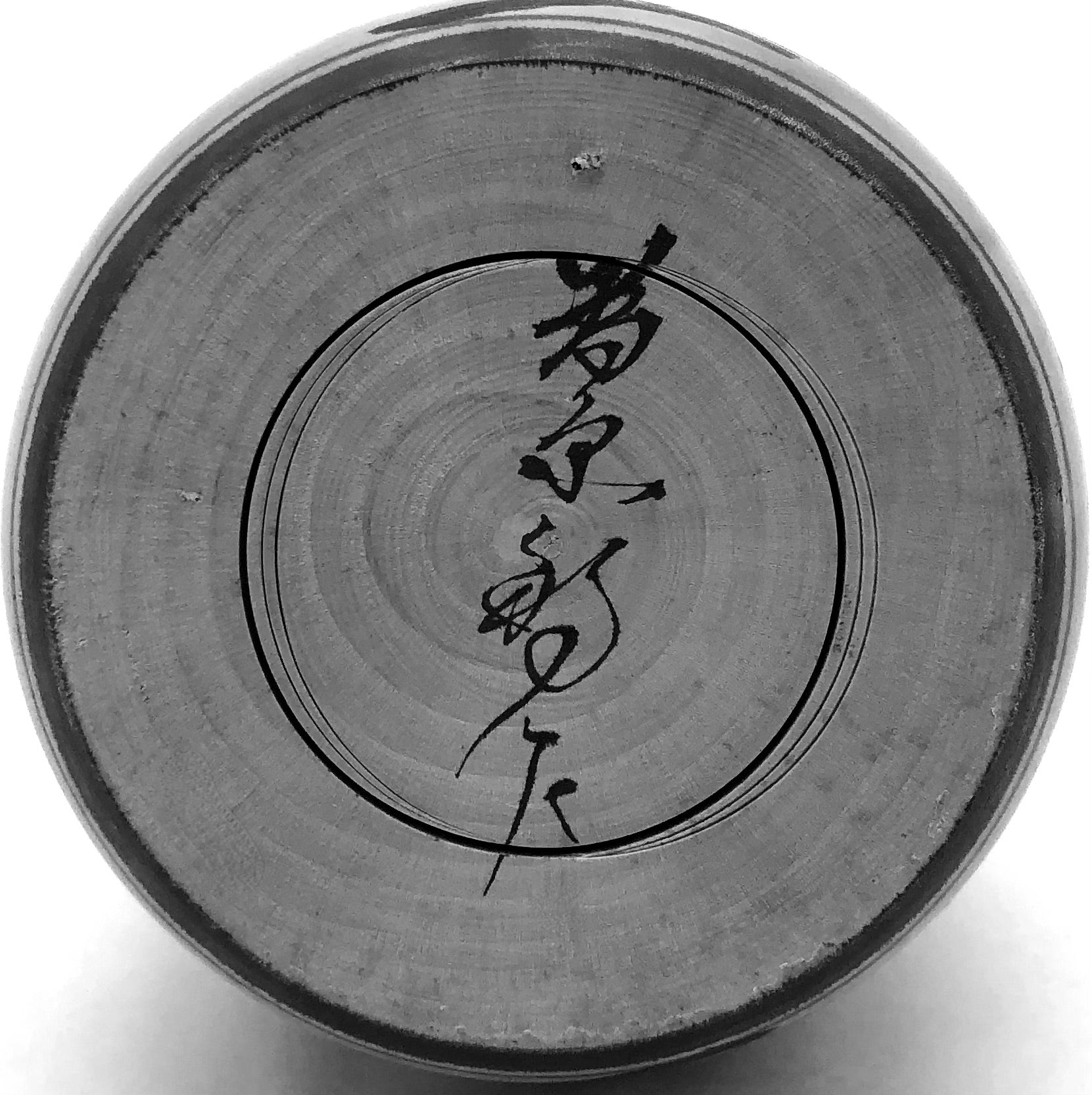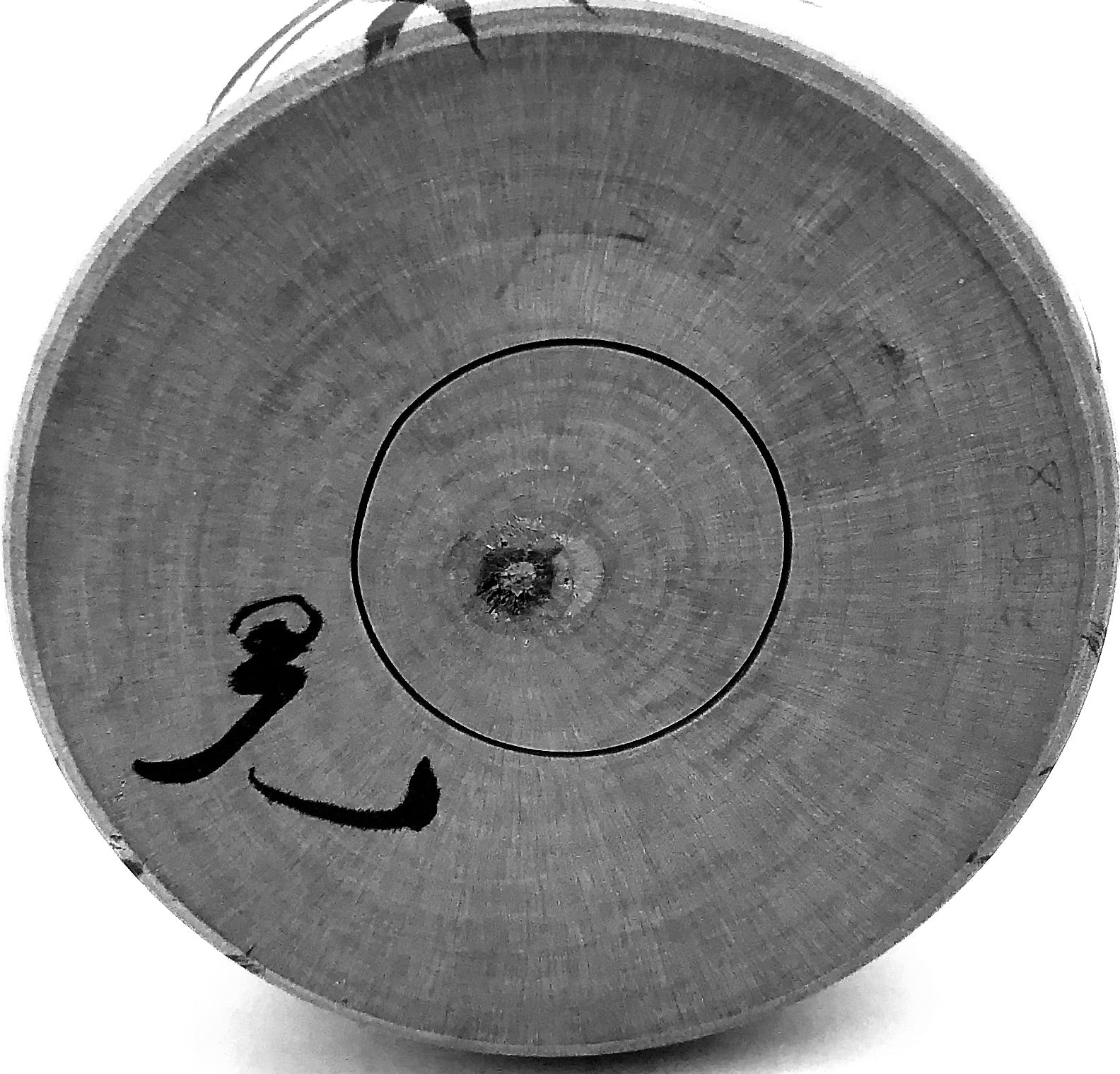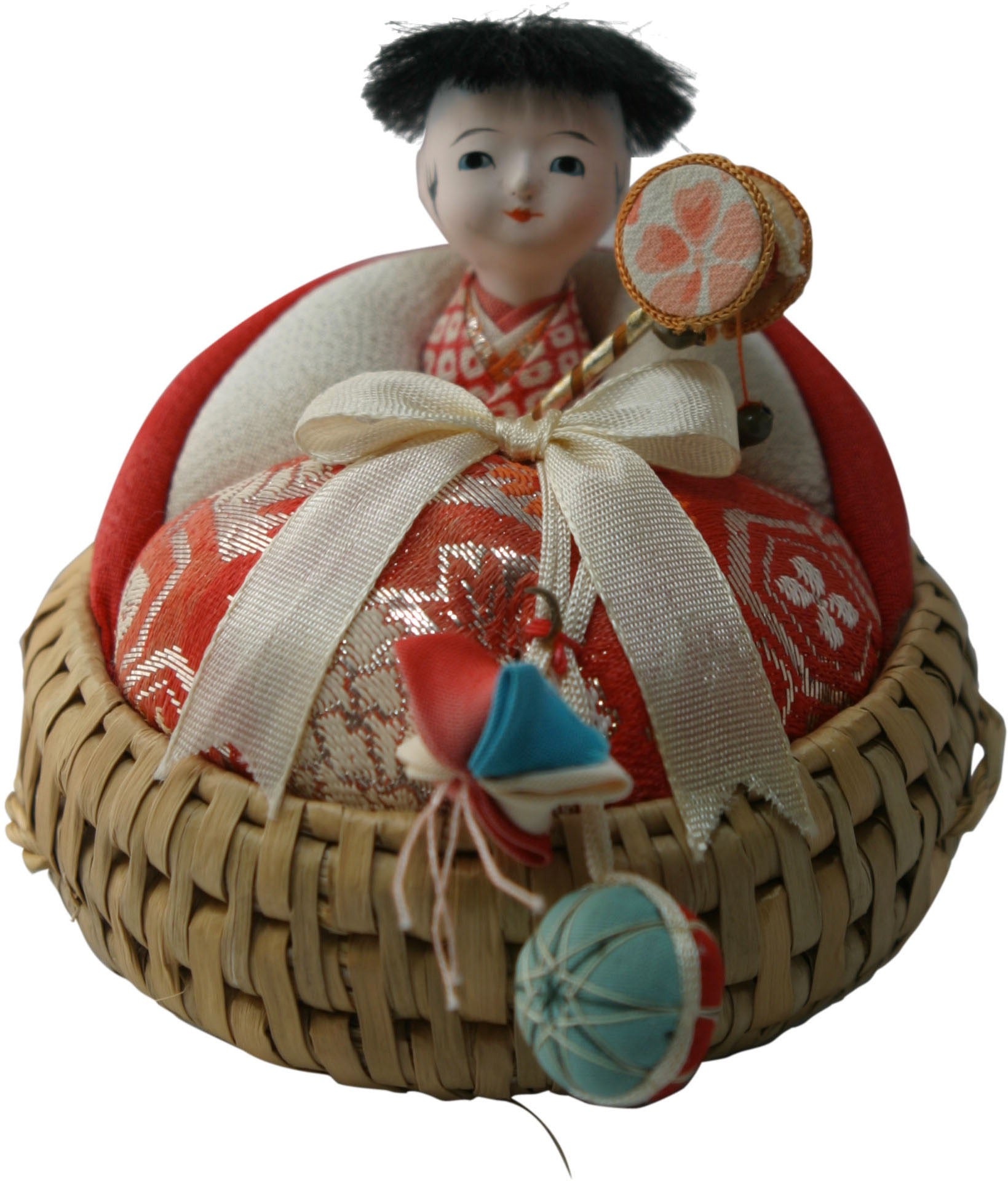
Ejiko | Izume.Ko | Nemariko
The Ejiko’s origin is derived from a folk toy that is called an Izume.ko Doll, (Izume.Ko means “Isume baby” in the Yamagata dialect) that dates from the early 1910s and which comes from Tsuruoka, of the Yamagata prefecture.
The toy is based on an Isume, a woven basket container that was traditionally used to keep the rice warm, but in the Tsuruoka area, farmers would keep their babies in the baskets during the busy season. This allowed them to watch the little ones while they worked the fields. Small toys would be placed in the basket along with the baby, comforting the baby and easing mother’s mind throughout the day.
The earliest versions of the Izume.ko doll were either an acorn shell, which was stuffed with a tiny doll, or a small verson of the woven basket that contained a baby covered in a small piece of cotton. Tiny toys were then tied to the edge of the basket. Out of these prototypes arose the Ejiko doll, which has its beginnings in the 1920s.
All Ejiko follow the same basic short, rotund style. However, some are hollowed out, with a separate, upper part of the body, (neck and head), also serving as the cover, or lid (these are called Obunko). The body would then be filled with minature Kokeshi dolls, or with other small toys such as spinning tops, (koma). Any member of a Kokeshi-making family can make an Ejiko doll, and the doll will still retain the artist’s characteristics of design as applied to the standard, traditional Kokeshi made by the family.
The facial features, in particular, will be the same as the regular-shaped dolls, as will the hair and any other decorations on the head.
The Ejiko is the only other doll form that transcends all ten+one different traditional types. While this form is not considered a separate member of the ten original families, it later was accepted by collectors as its own entity, and as a traditional doll in its own right.

Nakanosawa-Kei
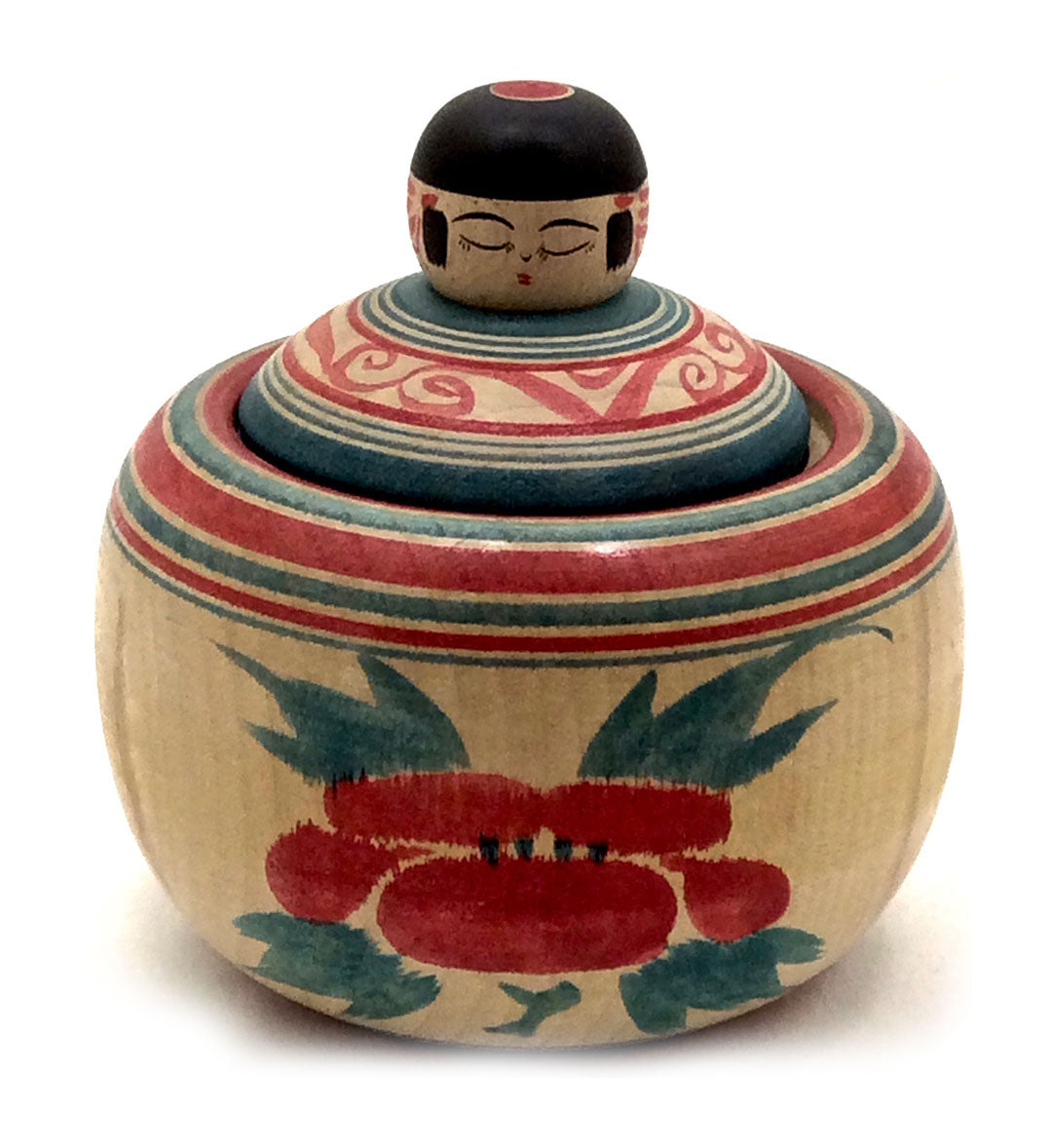
Nurugo-Kei
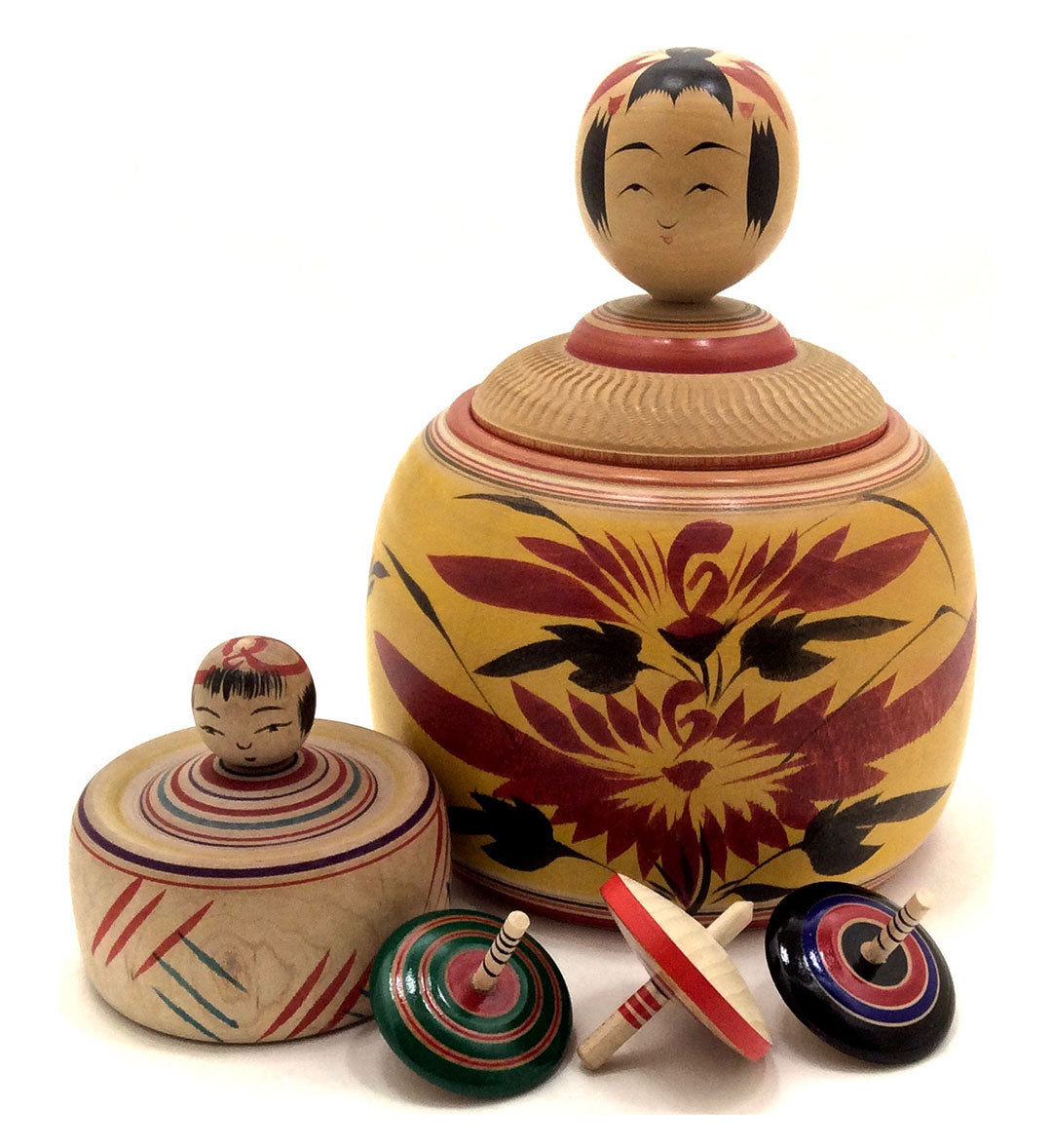
Narugo-Kei
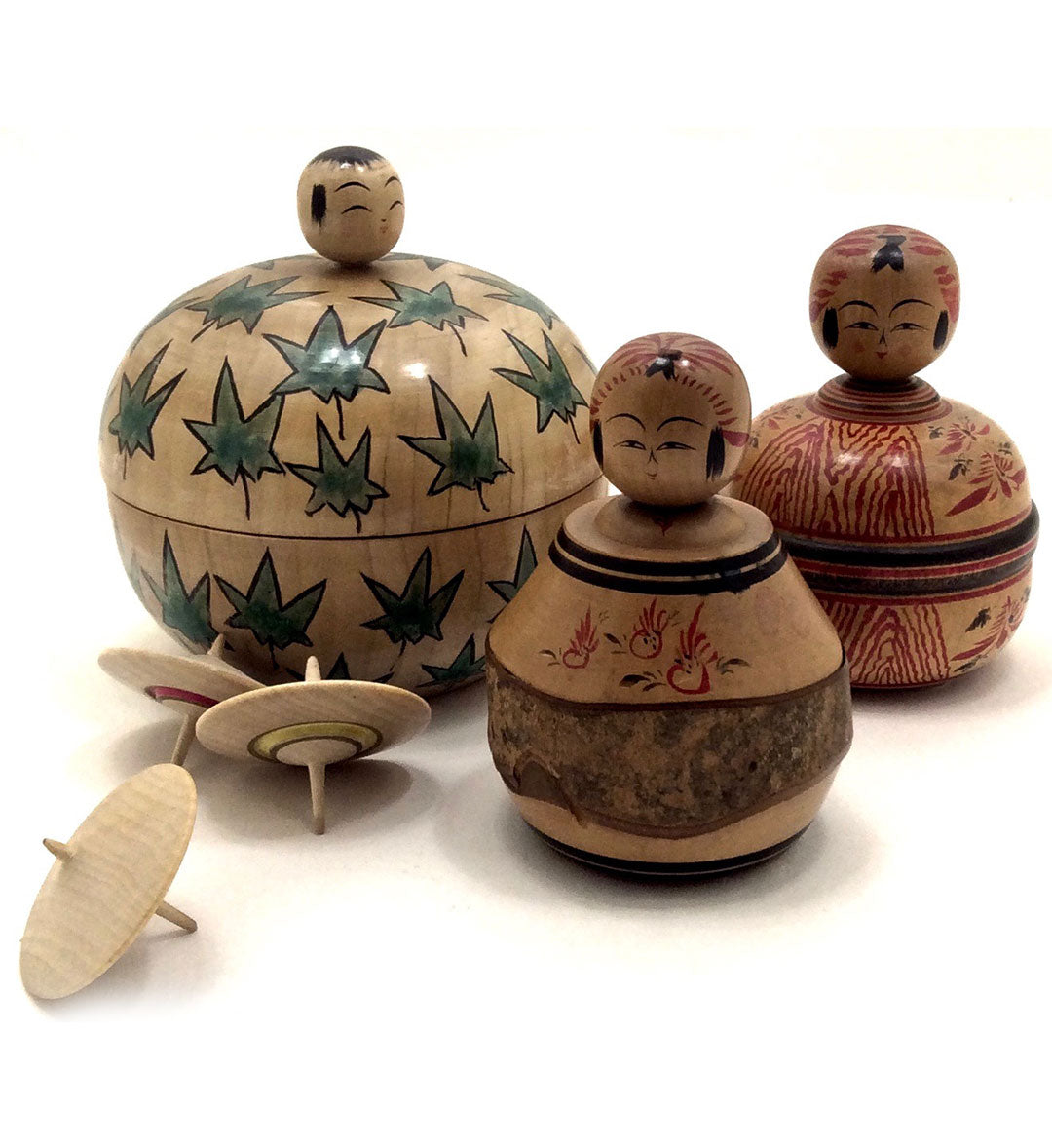
Tougatta-Kei
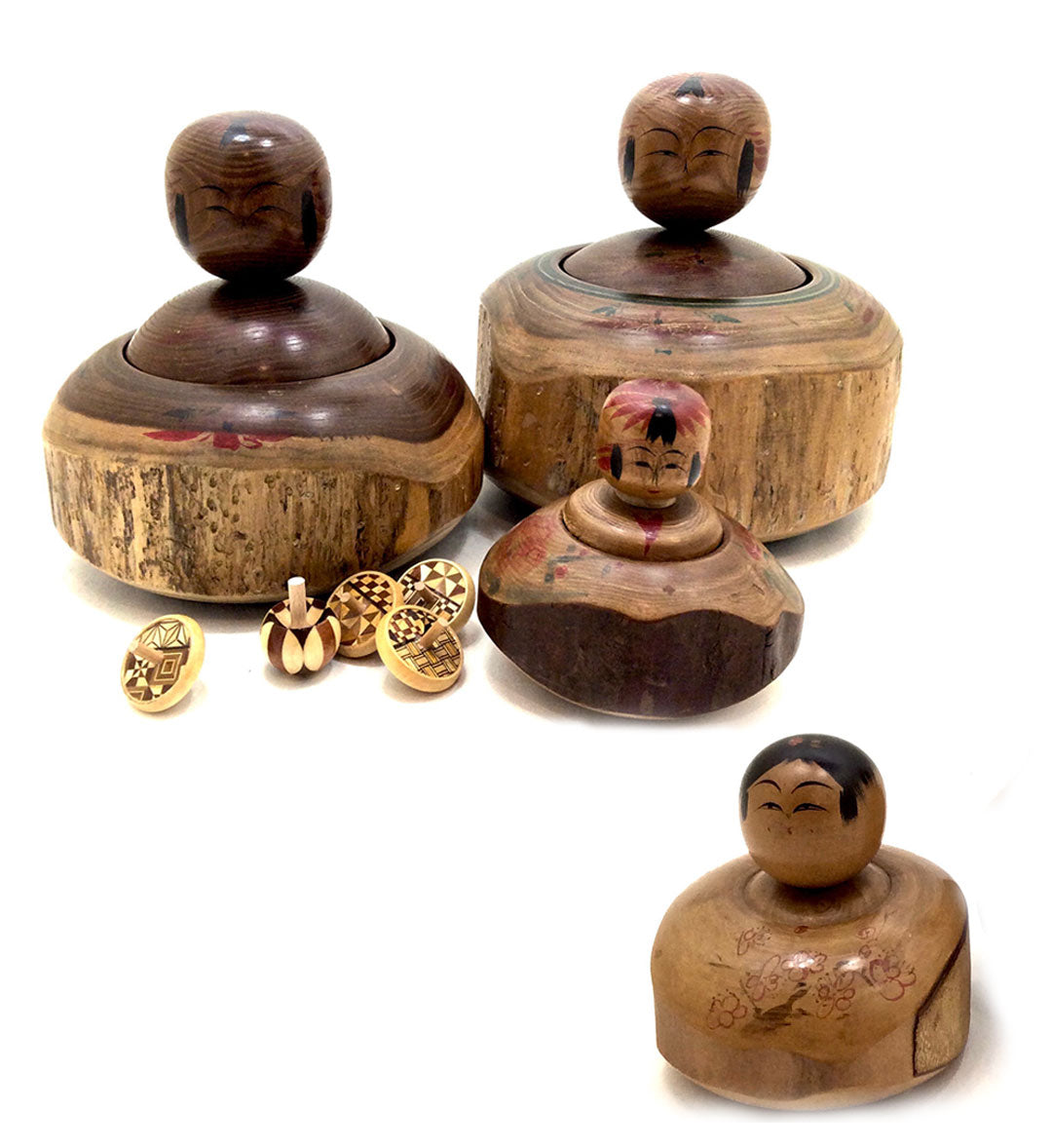
Tougatta-Kei
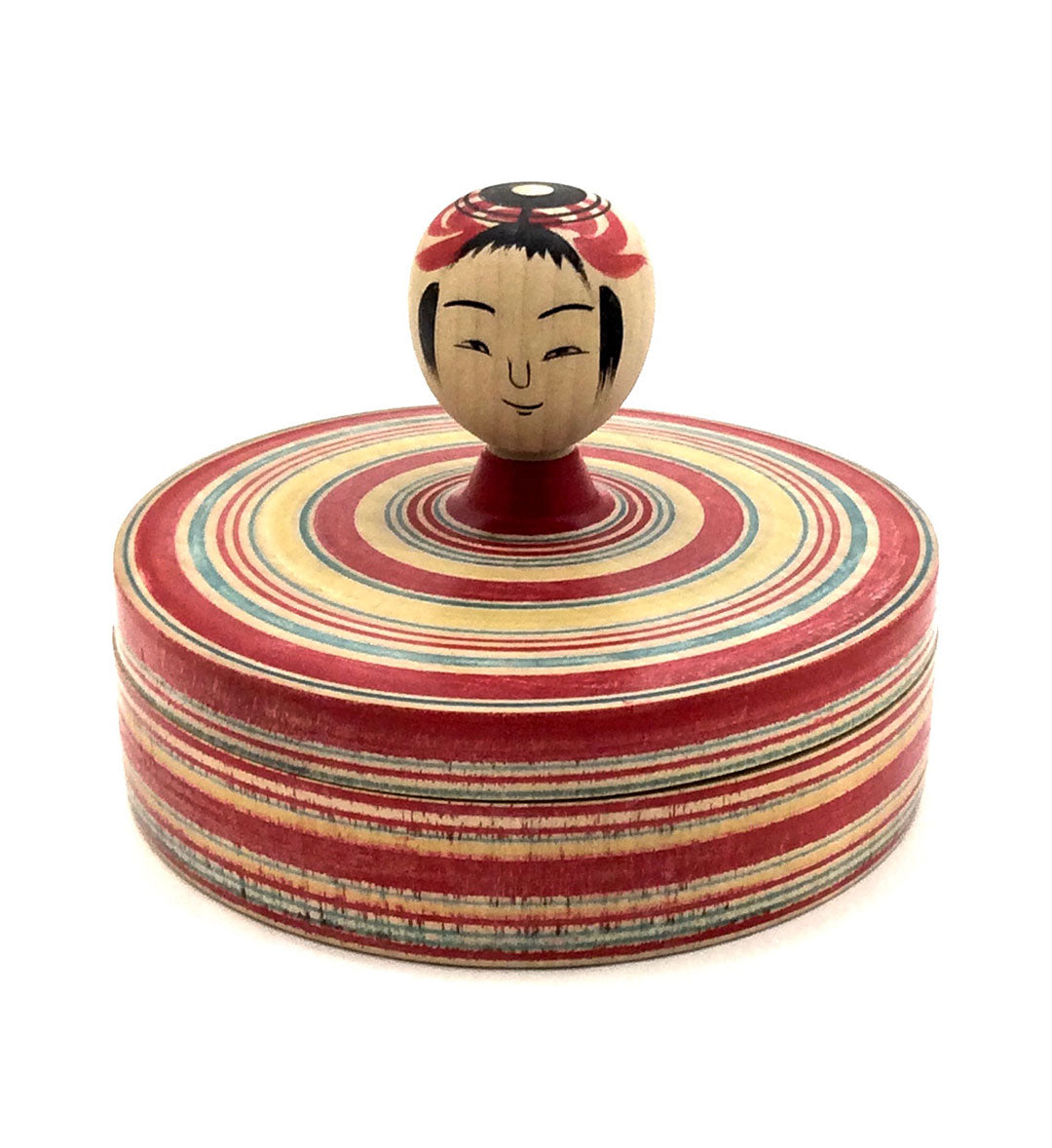
Tsuchiyu-Kei
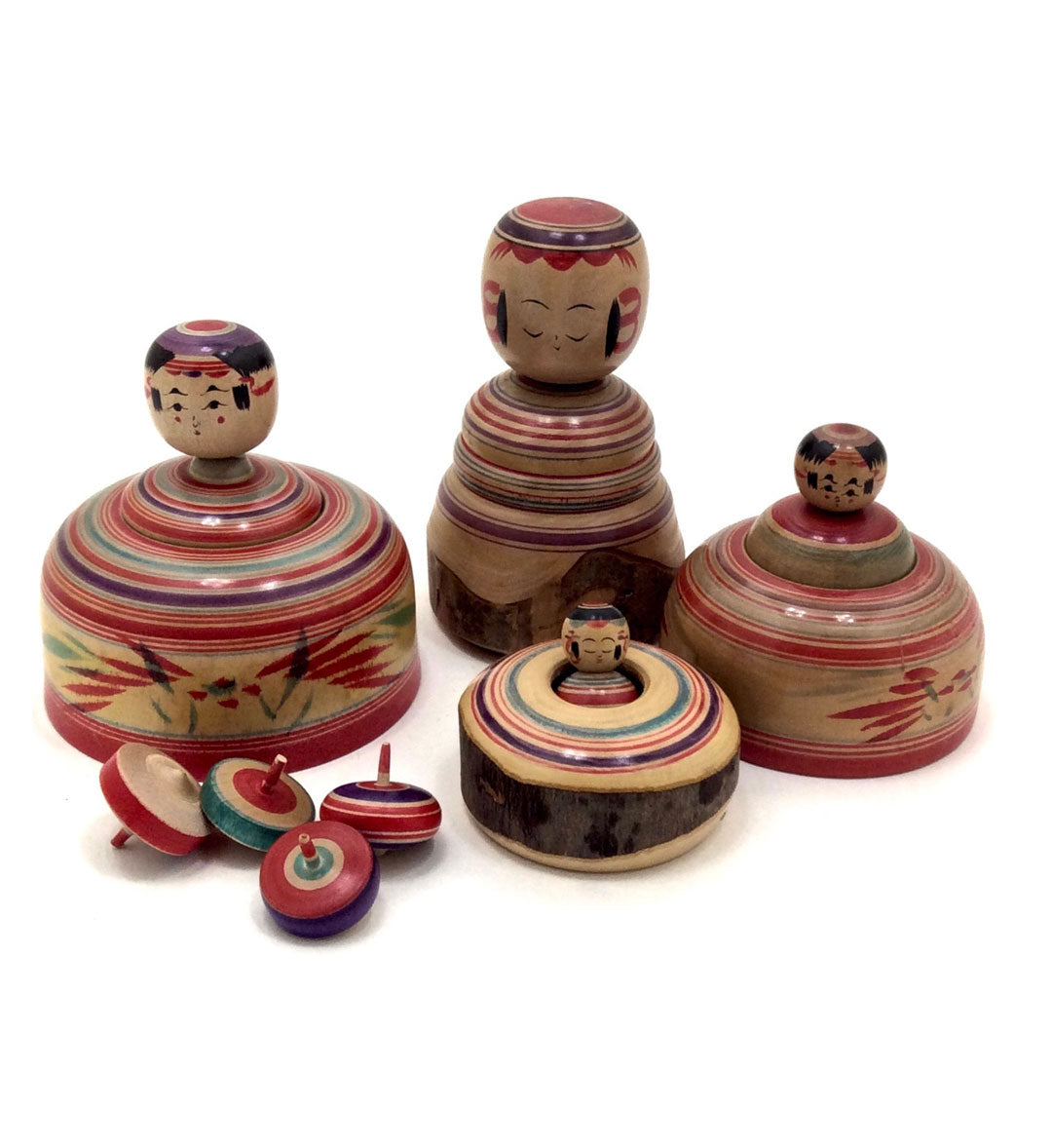
Yajirou-Kei
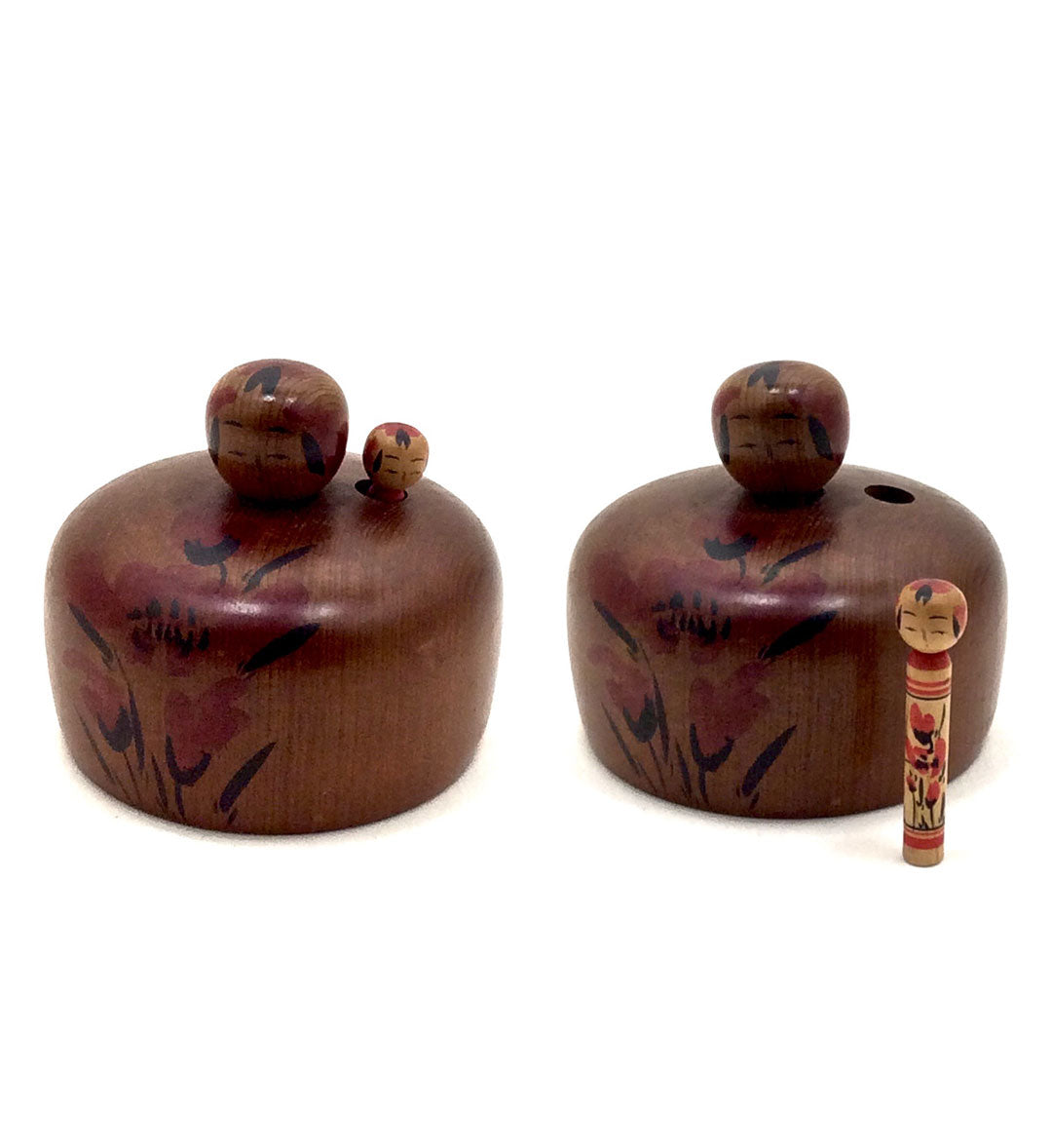
Yajirou-Kei
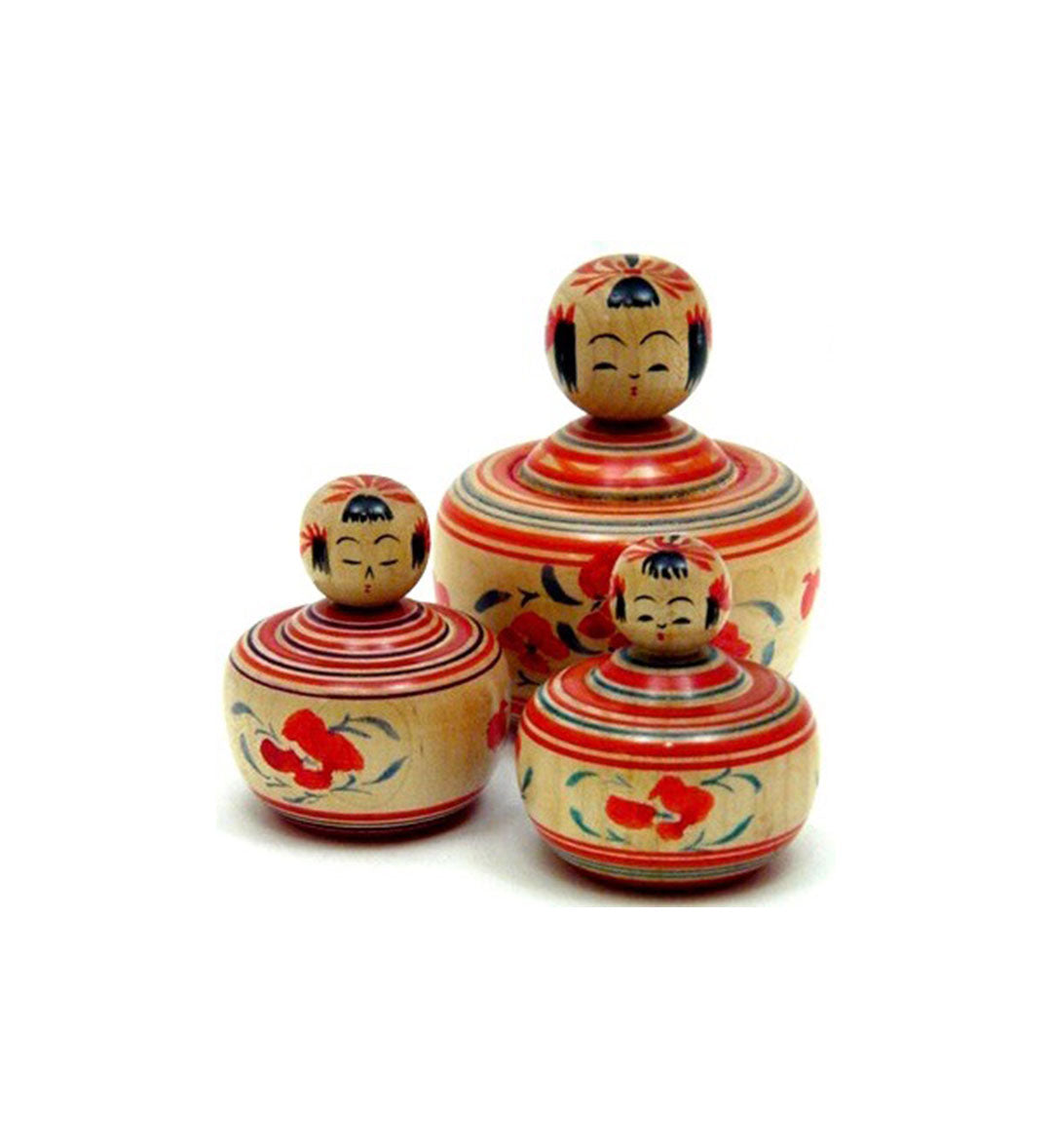
Yamagata-Sakunami-Kei
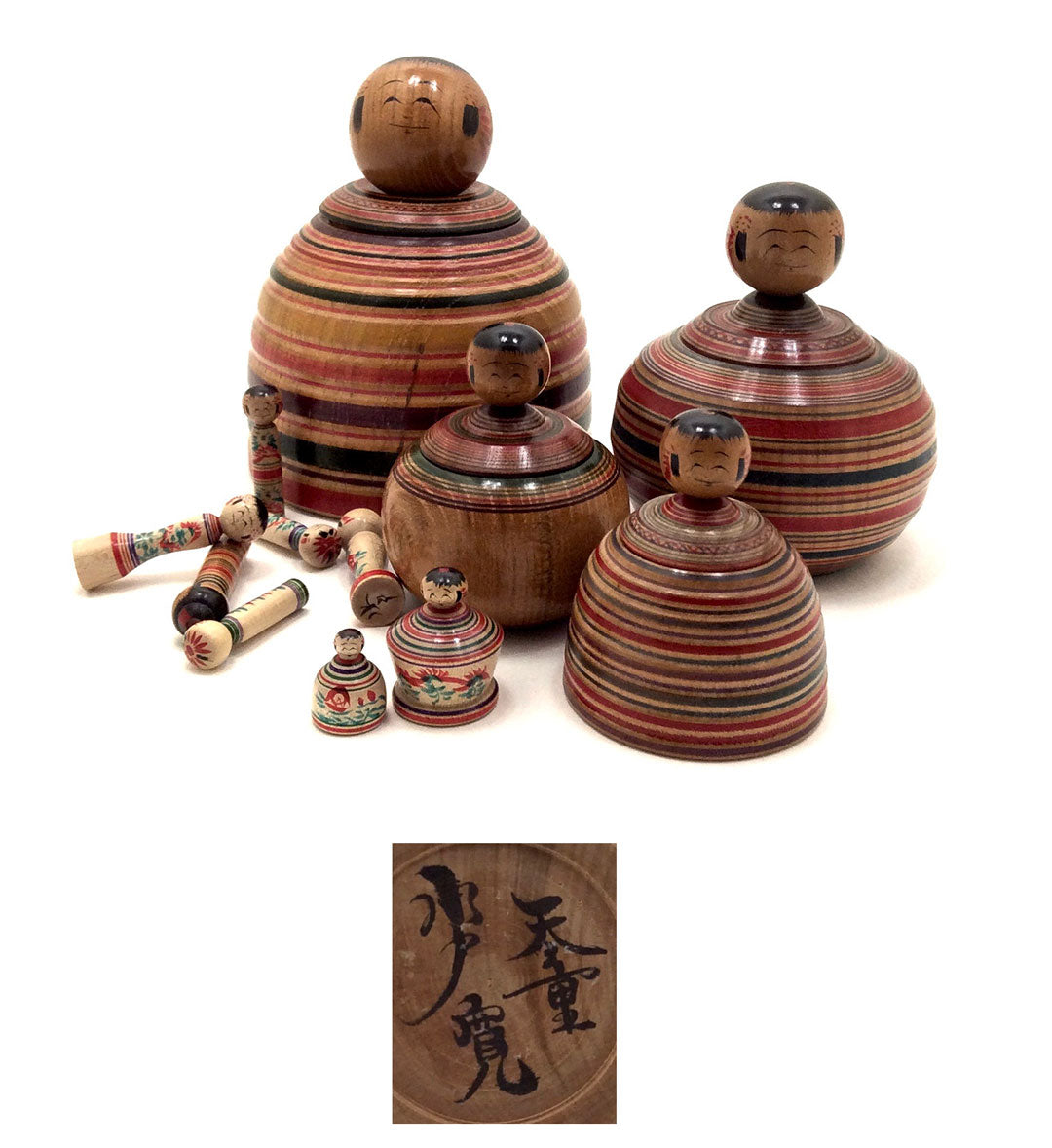
Zao-Kei | Mito, Hiroshi
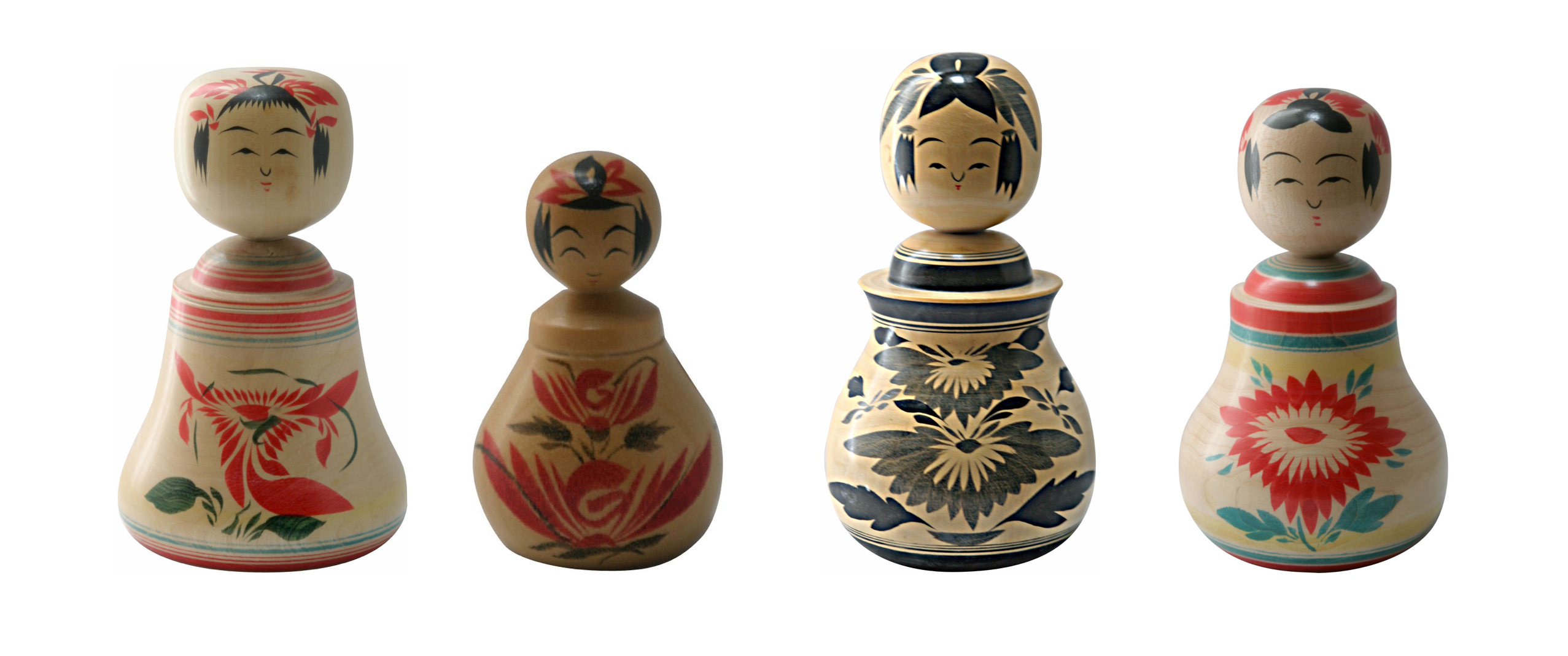
Nemariko
Ranging in size from 1-1/2” to 6-0”, these dolls are a substrain of the Narugo family. As you will notice, they differ from the Ejiko dolls by being taller than they are wide, and are far more limited in the patterns used on the body. Chrysanthemums, maple leaves, and camellia blossoms are the main motifs. All of them are similar in facial features, and while they are always made of one piece of solid wood, the head will turn and squeak, just as their larger sisters do. They are never hollowed out to contain toys.

